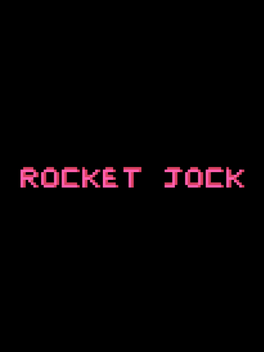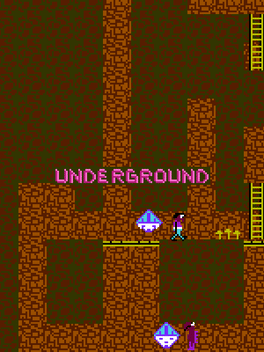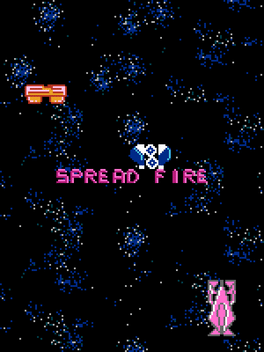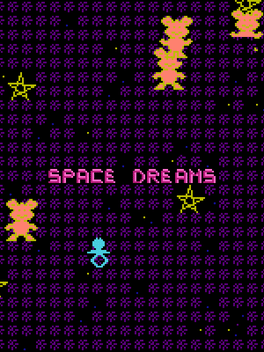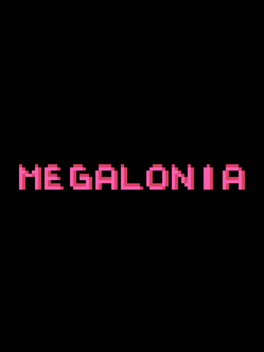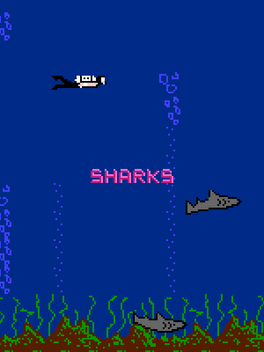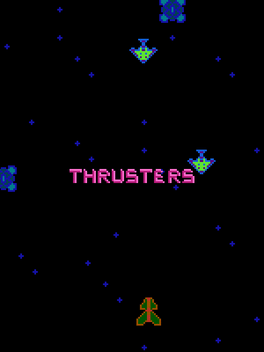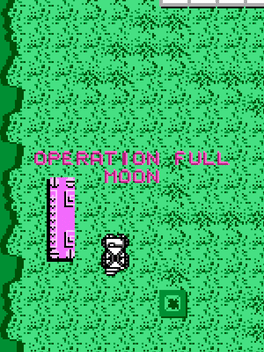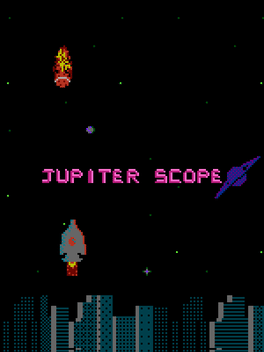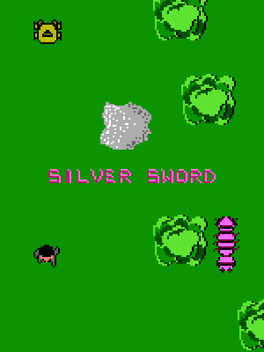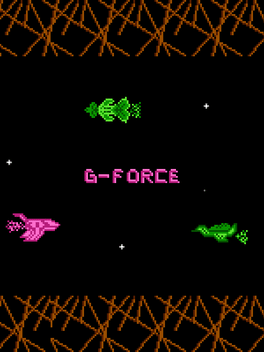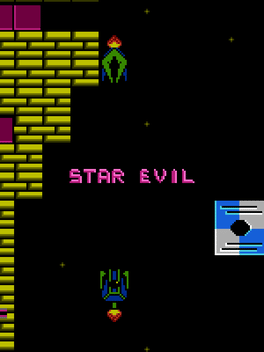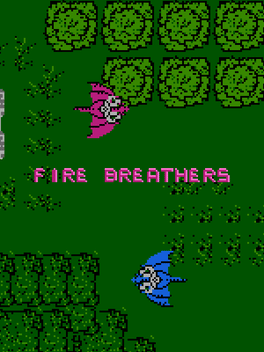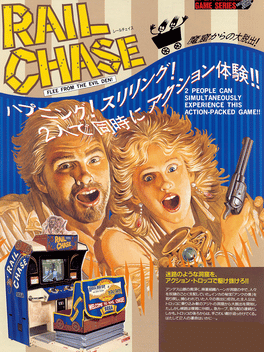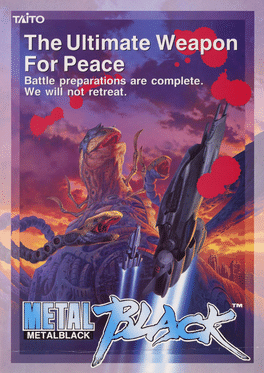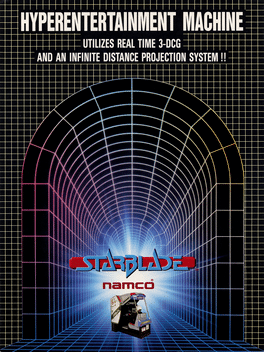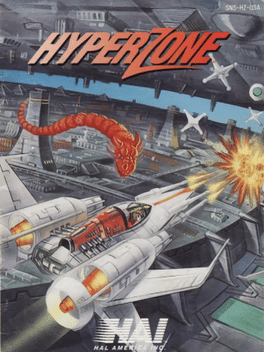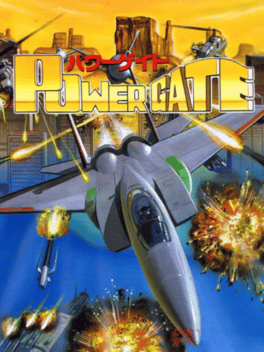New Shooter Games - Page 420
-
Rocket Jockey
1991
Rocket Jockey
1991
Futuristic cowboy straddles a rocket attempting to lasso various robo-cattle. The lasso gains power as it glowa brighter, but gets dimmer and losses power as the bad guys shoot and hit. -
Underground
1991
Underground
1991
A game featured in Action 52. Tunnel this way and that in order to find the gold. Be careful of the other strange creatures. -
Spread Fire
1991
Spread Fire
1991
A game featured in Action 52. You may have some great weapons, in fact the best. You will need them to fight off the tremendous enemies that seem to multiply. -
Space Dreams
1991
Space Dreams
1991
A game featured in Action 52. There is a black hole and on the other side all your space dreams. You must get past all of the obstacles to enter the hole and realize your dreams. -
Megalonia
1991
Megalonia
1991
She comes out of no where with her evil enemies. You must defend against the wave after wave of enemiesvand they will attack until only the Empress Machine "Megalonia" remains. -
Sharks
1991
Sharks
1991
A game featured in Action 52. You are a frogman and must collect rare marine creatures and recover lost treasures at the bottom of the sea. You have your stun-gun and can always retreat into your electro magnetic base that that repels sharks and the rest of the enemies. Your diving suit can only survive a few sharks bites and is useless against the deadly jelly fish. -
Thrusters
1991
Thrusters
1991
Thrusters is the twelfth game of the NES version of Action 52. The gameplay is one of the many space shooter games on Action 52. It is which you play as a spaceship shooting enemies. -
Dam Busters
1991
Dam Busters
1991
Dam Busters is the eleventh game in the NES version of Action 52. You play as a creature that looks like a beaver, shoot objects that look like tomatoes. Your goal is to go through often linear mazes and exterminate enemies. -
Operation Full Moon
1991
-
Jupiter Scope
1991
Jupiter Scope
1991
Jupiter Scope is the eighth game of the NES version of Action 52. You play as what appears to be a space ship, shooting incoming flaming meteors. -
Critical Bypass
1991
-
Silver Sword
1991
Silver Sword
1991
Silver Sword is the sixth game of NES version of Action 52. The player takes control of a small sprite of a person, and must shoot a number of random enemies in what looks to be a forest of some kind. The music was taken from another game. Also, some enemies are very difficult to dodge, because of the bad turning mechanics. -
G-Force Fighters
1991
G-Force Fighters
1991
G-Force is the fourth game of NES version of Action 52 and the second shooter game. The objective of the player is the same of Star Evil. The player needs destroy enemies , reach the end of level and defeat the boss. -
Star Evil
1991
Star Evil
1991
Star Evil is the second game of NES version of Action 52. It's the first game on the cartridge that has a space theme, which is a common theme in the list of games. A lot of these share the same code for the boss and the way you play the game. -
Fire Breathers
1991
-
Rail Chase
1991
Rail Chase
1991
Rail Chase is a Sega Y Board arcade light gun game developed by Sega AM3 and published by Sega. Released in Japan in September 1991, and in the United States later that year, the game came in both standard and DX cabinets (the latter seats players in the pneumatic "Magical Bench Seat", which tilts and rocks with the in-game action), and uses sprite scaling to simulate three-dimensional scenery. The game was followed by a sequel, Rail Chase 2, and a full-sized Sega theme park ride, Rail Chase: The Ride, both released in 1994. -
Metal Black
1991
Metal Black
1991
A shoot 'em up released by Taito. It is both "Project Gun Frontier 2" and "Darius III"; the game was developed by the Gun Frontier team, and ties to the original Darius development still exist. Players control the Black Fly on their mission to defeat the forces of Nemesis in hopes of saving the human race. Players collected many small power-ups to build their weapon's power. Players could then unleash a large beam attack that would drain their power level back to zero. Bosses could also collect these power-ups and use similar beam attacks. When a player's beam collided with a bosses, it would culminate in a spectacular reaction before the more powerful attack would push the weaker down. -
StarBlade
1991
StarBlade
1991
Sitting in the gunner position of a "GeoSword" fightercraft, you must shoot your way through the enemy armada and bring the fight to their base planet, Redeye. Altogether you'll have around 10 missions to get through before the galaxy is safe and your wingmen will help you along the way. And during those missions, you'll be expected to shoot out the sides of huge enemy battlecruisers, travel inside of enemy carriers and travel through the canyons of Redeye to deliver your payload. The PlayStation and the 3DO versions offer the choice between an arcade mode and an enhanced mode. In the enhanced modes that flat polygons are remade in fully textured polygons and the black bars on the sides have been removed to turn the image into a fullscreen view. -
HyperZone
1991
HyperZone
1991
Hyper Zone plays like a cross between a racing game and shooter. The object of the game is to navigate each level while shooting enemies and earning points, until finally an encounter with a boss ends each level. After enough points are acquired, the player earns an "extend" and his or her ship is upgraded in the next stage. The player's ship can receive up to six upgrades. -
Power Gate
1991
Power Gate
1991
Power Gate is a side-scrolling shoot 'em up, developed by Make and published by Pack-In-Video, which was released exclusively in Japan in 1991.
